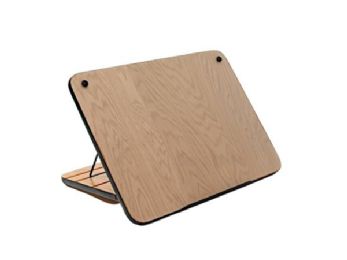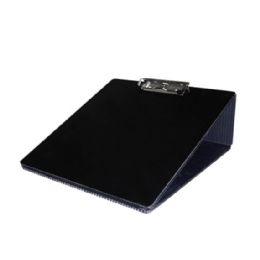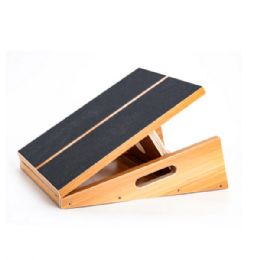
A slant board holds items on a tilting angle for easier reading and working from a sitting or standing position, or from a wheelchair. Some have a fixed angle while others are adjustable to fit the user. A slant board design varies from a lap desk, to a portable easel, to an adjustable full size desk.
Rehabmart is pleased to offer a variety of innovative slant boards from well-respected vendors, which include R.E.A.L. Design, Southpaw Enterprises, TherAdapt, Kaye Products Inc., Enabling Devices, and Sammons Preston.




What is a Slant Board?
A slant board is a piece of office equipment which is designed to hold and display books or papers. It is typically used in the workplace as well as in the home, to provide ergonomic support, improve efficiency, and help those who have difficulty holding onto books and papers. A slant board is available in a number of designs, but the basic features are much the same among different models. For example, it is capable of standing on its own and contains a ledge on which books or documents are placed. By setting an item on the ledge of the slant board, the user does not need to hold up the book or paper in order to see it. This frees up the hands for completing other tasks, and also helps those who have a difficult time holding items with the hands.
By providing ergonomic support, a slant board makes it possible to place a book or document at eye level. For instance, this is beneficial when typing, because the typist is not required to look down onto the desk and hurt the back or neck in order to see the document. Therefore, reducing the risk of neck and back pain for the user. Some slant board models stay in one position, while others are adjustable, making it possible for multiple users to utilize the same slant board. In addition, a user is able to apply a single slant board for various purposes or environments. For example, the same slant board can be employed at different desks where the workstation setup is not all the same, consequently, requiring the slant board to be changed to various angles.
Slant boards are also made from a variety of materials. Some are made of wood, while others are made of metal or plastic. Some materials are easier to keep clean than others, but the material it is made from has little effect on its quality. A slant board may be transparent in order for it to not block the view of what is behind it. In tight quarters, being able to see behind a slant board is essential in some cases.
What is an Adjustable Desk?
An adjustable desk, also called an ergonomic desk, is one which is designed to allow adjustments in both the tilt angle and the height by the user. The height adjustments can be motorized or manual, depending on how sophisticated the desk is. This design reduces neck and back strain for an individual, either a child or an adult, working at a desk for long periods of time. It can also be utilized for therapy exercises. Some adjustable desks have interchangeable tops for many applications.
The degree tilt of a desk can vary; some offer 0 to 90 degrees while others offer 0 to 45 degrees. An adjustable desk’s tilting surface allows an individual to be positioned at the proper distance from the work. This aids in stabilizing the head, eyes, and trunk, and assures freer movements of the arms, wrists, and scapula. All of these contribute to precise hand use when working with objects. Other desk models may have wheels so it can be moved to the individual or room where it is needed. Most models allow enough room between the desk legs for a wheelchair to roll right up to it so an individual is closer to the work surface.
Hulet Smith, OT
Rehabmart Co-Founder & CEO
lb